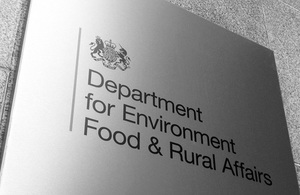Richard Benyon views the homes of the future
Business Research Establishment work with the UK's main developers and manufacturers to promote the latest cutting edge sustainable innovations and technologies.

Environment Minister Richard Benyon had an insight into how the homes of the future will look and saw first-hand what can be achieved with sustainable building materials during a visit to the BRE Innovation Park in Watford today.
The BRE (Business Research Establishment) site features twelve world-leading sustainable homes and buildings that demonstrate diverse and pioneering approaches to low impact design and construction. BRE work with the UK’s main developers and manufacturers to promote the latest cutting edge sustainable innovations and technologies.
Environment Minister Richard Benyon said:
“The advances in sustainable building and design displayed at the BRE Innovation Park are truly impressive. This goes to show what can be achieved on a large scale by embracing more sustainable methods and resources.
“We live in a world of stretched natural resources. It is essential that businesses operate more sustainably and minimise their environmental impact if we are to ensure our economy remains competitive. It is pleasing to see that the construction industry is rising to the challenge.”
Richard Benyon was shown a range of the sustainable homes at the BRE Innovation Park which displays more than 400 different construction innovations and emerging technologies.
On the tour he was shown:
The Natural House, built by the Prince’s Foundation for the Built Environment, it was constructed using natural materials such as clay blocks, lime plaster and sheep’s wool insulation, and designed to deliver significant energy savings.
The Cub House, made from recycled UK steel and designed by Charley Greig and manufacturer FutureForm, is the first UK factory-manufactured home to be awarded a Code for Sustainable Homes Level 5 certificate. The home has a highly airtight fabric that minimises heat loss, an air exhaust heat pump for energy generation, low energy lighting and rainwater harvesting.
The Innovation Park landscaping scheme, which demonstrates the contribution landscaping can make in delivering a sustainable built environment. The landscaping includes play areas for children, street furniture made from recycled materials, habitats for birds, bats and reptiles, and ‘green walls’ of plants and hedges.
The Kingspan Lighthouse, which when built in 2007 was the world’s first zero carbon home. The 93metre two-storey home uses renewable technologies such as a biomass boiler and a host of water efficiency measures which mean that 30 per cent of the water used comes from rainfall or recycling systems. The house also has smart metering to allow occupants to see how much energy they are using.
Notes
Photos from today’s visit will be available later today from the Defra Press Office or via the Defra Flickr Channel www.flickr.com/photos/defragovuk/sets/72157624119674171/
BRE was created by Government in 1921 with a mission to improve the UK’s housing and building stock through research and new knowledge generation. It was privatised in 1997 and is now in its twelfth year as a private company. It continues to generate new knowledge through research for Government and the private sector, and helps the construction industry create better, safer and more sustainable products, buildings, communities and businesses. www.bre.co.uk